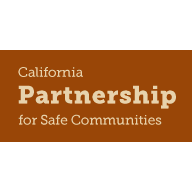 Daniela Gilbert, Deputy Director, California Partnership for Safe Communities (CPSC) speaks on using data not only to support program work but also to identify stakeholders and provide deliberate impetus for them to begin working together on specific community problems.
Daniela Gilbert, Deputy Director, California Partnership for Safe Communities (CPSC) speaks on using data not only to support program work but also to identify stakeholders and provide deliberate impetus for them to begin working together on specific community problems.
…
The tide is turning on the legitimacy and legality of stop-and-frisk. While not immediately apparent, this shift makes a statement about collaboration. Young people stopped under this policy are less willing to work with police; each additional stop makes someone 8% less likely to report future crime. The rejection of a tool that perpetuates distrust has created an opportunity for something different—a way of working that utilizes data and partnership, rather than profiling, to guide crime reduction.
Addressing A Tough Problem
The most pressing health problem for men of color age 10-24 is being murdered. While profoundly sad and unjust, there are effective, evidence-based approaches to address this, and they start with data.
The strategy—commonly called Ceasefire or the Group Violence Reduction Strategy—is based on the proven premise that an incredibly small percentage of the population is at highest risk of violence, and that violence primarily occurs among small groups and networks. Working in a different way with these networks can reduce violence at the community level.
In-depth analysis of local homicides—when and where, who and why–consistently demonstrates that a small number of young men associated with groups or gangs are involved in 60%-80% of homicides in any given city. And 70%-90% are known to the criminal justice system. This “problem analysis” paints a manageable picture–one that suggests who should sit at the table together to reduce violence.
An Impetus To Collaborate
This analysis illuminates an opportunity for civic, community, and criminal justice leaders to work together in a focused, collaborative way. A clear picture of who is at highest risk of violence creates a common understanding of the problem and opportunity; it generates a data-driven call to action for constituents who serve this population—for example police and probation departments, health services, gang outreach, houses of faith—to assemble a working partnership. The fact that the population at highest risk is known and of a manageable scale acts as further collaborative fuel.
These stakeholders are able to unify in their determination to stop violence and together can deliver an anti-violence message that persuasively communicates concern, respect, commitment, and the risk associated with violence. At the same time, the partnership can mobilize their limited resources in a way that brings credibility to the message being delivered. The day-to-day working relationships driven by collaborative use of data foster trust, mutual accountability and co-authored local approaches that span the often-deep divide among criminal justice agencies and the community.
Results
How effective is this cycle of data analysis, partnership building, direct communication, and follow through? A meta-analysis conducted by the Campbell Collaboration found that 10 of 11 evaluations reported noteworthy reductions in violent crime. That is a pretty high yield.
These reductions ranged from a 42% reduction in gun homicide in Stockton, CA to a 63% reduction in youth homicide in Boston, MA. Results were of a similar order in other evaluated cities, reflecting effectiveness across diverse demographics and economic conditions.
These findings represent real community impact: fewer family members lost to death and incarceration, communities that can become safer for revitalization and increased opportunity for young people.
Working together is hard. Investing in analysis to guide strategy is hard. But, if we know how to reduce gun violence, if we can do it using currently available resources, don’t we have an obligation to demand this collaborative approach? Stop-and-frisk clearly indicates what not to do. The next step is for leaders and residents, for the field of people concerned about the disproportionate representation of men of color in our prisons and homicide tallies, to demand and invest in collaborative, data-driven approaches that work.
…
Your turn.
[poll id=’17’]
